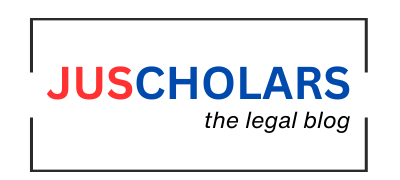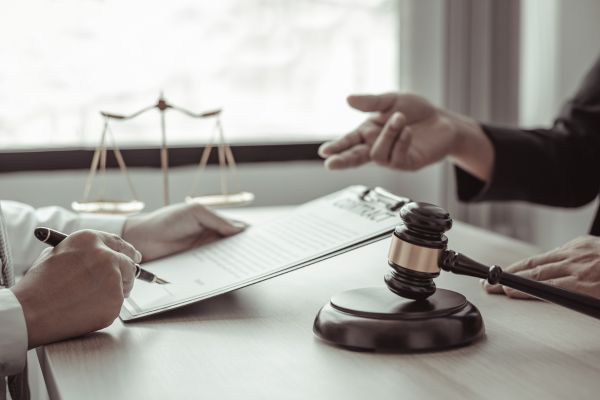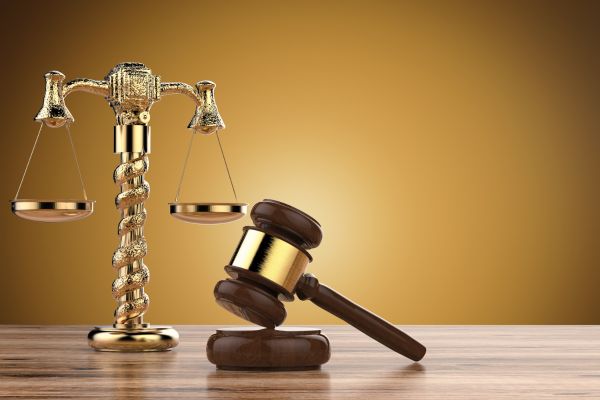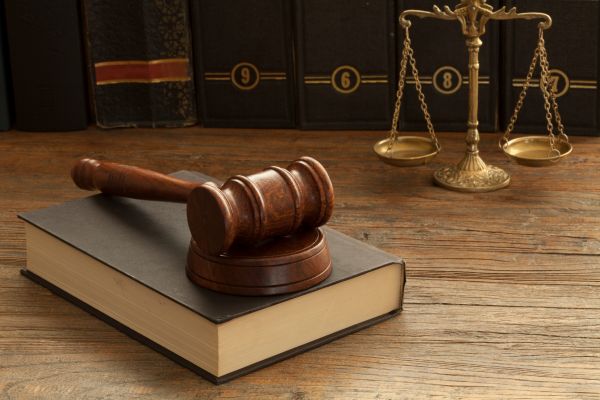Admissibility is the quality or state of being permissible or acceptable, especially in a court of law. Evidence, in general, in a legal context, is that which court accepts to prove or disprove alleged facts in a trial. Therefore, evidence admissibility entails anything in the form of document, testimony, or tangible object that can be presented to the court. Evidence however, is not absolutely all admissible; only relevant, reliable and lawful evidence are admitted to the courts. Evidence is important since such is presented to the judge or jury for the purpose of proving certain important facts or elements.
A related concept with confession is that of admission, which is defined under “Section 17 of IEA/ Section 15 of BSA.”[1] Generally speaking, admission means permitting to enter. In legal terminology, the admission of a fact means the certain acknowledgment or assent to some fact by a person to another. Admissions, in contrast with confessions, are frequently made in previous inquiry or during other proceedings and can be produced as evidence in courts. Though confession may be voluntary and not after any interrogation, admission is usually made in response to some questions. Admissions, just like all other forms of evidence, ensure the due course of law whereby only valid and credible information is used in determining the facts in contest.
Historical Development
The admissibility of evidence in Indian law has seen a change in the wake of modern developments and changes in the nature of evidence due to technological advancement. At the outset, the Bhartiya Sakshya Adhiniyam, which provided the basic framework for the laws of evidence in India, did not contemplate the emergence of electronic evidence because it was basically premised upon oral, documentary, and physical evidence.
As technology continued to advance, so the law of the land was also forced into accommodation about digital and electronic data. To this effect, through the “Information Technology Act, 2000, Sections 61 and 62 were incorporated into the Indian Evidence Act,” thereby making electronic data such as emails, documents in electronic form, or data from a computer admissible before any courts. Among these, especially Section 63 has come to deal with the admissibility of such evidence, stating that a certificate is necessary for authentication of the electronic record.
The Supreme Court has played an important part in shaping these provisions. First, in the year 2005, the apex court held that electronic records, such as telephone records, could be proved without a certificate under Section 63. However, in a seminal judgment passed in the year 2014, “Anvar P. v. P.K. Basheer. K. Basheer,[2] the Court held that an electronic-evidence is admissible only if it is accompanied by a certificate under S.63.” The judgment was quite imperative to make sure that only authenticated electronic records came into the Courts.
The Supreme Court, later in “Arjun Panditrao Khotkar v. Kailash Kishanrao,”[3] again considered this issue and ironed out the inconsistencies that had been so created, holding that while a certificate under Section 63 was essential, in some cases, such deficiency can be cured. Thus, the judiciary is evolving to ensure that the laws pertaining to evidence keep pace with advances in technology and the need for fairness and reliability in the course of a trial.
Admissibility And Relevancy
The “Bhartiya Sakshya Adhiniyam, 2023” has laid down the principles of relevancy and admissibility between Sections 5 to 55, which maintain the evidences that can be adduced before the courts and under what circumstances. These sections classify various kinds of evidences and their relevancy concerning the case.
Res Gestae (Section 4)
Section 4 of the Act deals with res gestae, which means statements made spontaneously or contemporaneously with the events to which they refer. Statements under this heading are considered admissible because, being made in the heat of the moment, they can relate the immediate reactions and feelings, hence reliable, of the speaker regarding the event. For instance, when one exclaims something when a crime is being viewed, that utterance can be admitted because it becomes part of the occurrence and describes the ambient circumstances of the transaction.
Admissions and Confessions [Sections 15-25]
An admission is a statement by a party to some of the facts in issue. While Sections 15 to 19 allow for admissions as proof against the party making the same and are not conclusive, a confession is a voluntary statement by an accused admitting to the committing of a crime. Sections 22 to 24 enjoin that a confession shall be voluntary, without duress or coercion for it to be admitted to the court. These sections ensure that the admissions and confessions are reliable and reflect the true state of affairs, which is of importance in fair adjudication.
Statements by Persons Who Cannot Be Called as Witnesses (Sections 26-27)
The sections, namely Section 26 and Section 27, provide for the admission of statements made by persons who are deceased or otherwise unavailable to testify. These should form statements relevant to their death or circumstances which could have directly led to or resulted in their death, provided under Section 26. Secondly, statements that can be allowed are those made by persons unable to get called as witnesses, provided they are relevant to the case, as stated in Section 27. This implies that critical evidence cannot be excluded on the basis of the fact that the witness is unavailable.
Relevancy of Judgments (Sections 34-38)
Sections 34 to 38 deal with the relevancy of judgments in other cases. Broadly, judgments pronounced in earlier cases are not admissible as proof of the truth of facts stated therein, except in particular circumstances. For instance, a judgment is relevant to prove that an issue was decided by that judgment, or estoppel, as provided under Section 38. Thus, this principle prevents the misuse of past judgments as a conclusive piece of evidence, but their use in special situations where they may serve to illustrate the case on hand.
Expert Opinions (Sections 39-45)
Expert opinion is admissible under Sections 39 to 45 if the expert has specialized knowledge or expertise in any area. Experts can give opinions concerning matters that call for technical or scientific expertise beyond the ordinary knowledge of the court. Their testimony assists the court in making sense of complicated issues and facts not easily accessible through ordinary evidence.
Character Evidence (Sections 46-50)
Sections 46 to 50 deal with the admissibility of character evidence. The general rule is that evidence of a person’s character is not admissible to prove that the person acted in a particular way on a particular occasion. On the other hand, character evidence may be relevant in specific contexts, such as when a person’s character is directly an issue, or in cases where character forms an integral part of the issue in dispute. This limitation is so that the character evidence cannot be admitted to prejudice the case unduly.
Hearsay Evidence and Exceptions (Section 54-55)
The hearsay rule normally excludes from evidence any statements made out of court to prove the truth of the matter asserted. This is a rule designed to exclude evidence which cannot be subjected to the test of credibility by cross-examination. Hearsay is held not to be reliable because the declarant is not produced in court for scrutiny.
There are, however some important exceptions to this rule. Dying declarations-part of statements made by a person who thinks that he is about to die, about the cause of his death or about the circumstances relating to his death-are admissible under “Section 32(1) of the Indian Evidence Act.” Public records include documents under Section 35, which are entries made by public officers in the performance of their official duties and are considered reliable. Other exceptions are statements made in the course of business, Section 32(2); and statements against interest, Section 32(3). The above are important exceptions which operate to admit certain categories of hearsay which may fairly be regarded as reliable as well as necessary to be given to ensure that the ends of justice are met.
Documentary Evidence (Sections 56-93)
Documentary evidence can be defined as the written documents produced in court to support the fact in issue. Documentary evidence can be broadly divided into two groups: primary and secondary evidence. Primary evidence is the original document, Section 57, while secondary evidence consists of copies or reproductions of the documents, Section 58. For secondary evidence to be admitted, there are also requirements that must be achieved, such as proving the existence of the original document and the loss or destruction.
Those created by public authorities and are presumed to be authentic (Section 74-77). Examples include official records, such as birth certificates and government reports. Presumptions means that certain documents are allowed to be considered as authentic without the need for proof supporting execution, such as a document executed in the normal course of business.
Electronic Evidence (Section 61-63)
The information in electronic form; examples include e-mail messages, computer files, and other records generated or transmitted by electronic devices. Because of the rapid rate at which technology is changing today, it became inevitable that the Indian Evidence Act was modified to accommodate electronic records. Sections 62 confirm that an electronic record shall also be considered a document, whereas Section 63 gives the conditions for admissibility. This involves the requirement of a certificate under Section 63 that authenticates the same electronic record as being reliable. The cited case law has interpreted it to state that these certificates are a necessity for electronic evidence to be accepted as permissible for such an electronic record to be treated with as much care as that which would have been accorded to a hard, paper document.
Illegally Obtained Evidence
Evidence that has been obtained in an unlawful way. This is usually not admissible as that would be in violation of the principles of law and justice. However, Indian courts have excluded the rigors of the rule excluding such evidence when it was felt that by excluding such evidence, the court would occasion a miscarriage of justice, and admissibility was held necessary for the ends of justice. The classic example of this is the case of R. v. Christie where it laid down that even illegally obtained evidence can also be admitted, provided it is relevant and necessary for the case. But in practice, the Courts often balance the illegality of its procurement against the probative value of the evidence and the effect on fairness in trial.[4]
Factors Determining Inadmissibility Of Evidence Law
Evidence law outlines a number of characteristics that make the admission of evidence not be entered into court proceedings. One of such bases is where evidence is unfairly prejudicial. Prejudicial evidence refers to information that may tend to influence judgment based on past history, rather than facts relevant in the case at hand. This type of evidence may also be inflammatory or prejudicial, as it can unfairly create an emotional impact on the jury or judge without enhancing the factual understanding of the case before them. An example would include some sort of picture of a child put near a victim’s body and presented to the court, which would have nothing at all to do with proving any material fact in a case but might well outrage the court.
Another factor is wasting time, for example, the evidence or witnesses presented by lawyers that are not germane to the case, thus making the trial longer than it actually should be. For example, it would be a waste of time for an advocate to call many witnesses just to testify to the integrity of the accused. Evidence to mislead, serving as a red herring to the main issue in the trial, is also not allowed. A classic example is that in a rape case, the rapist focuses on the gender of the minor when, as a matter of fact, the pertinent issue at hand is whether the rape occurred or did not, irrelevant of gender.
Hearsay evidence is generally not admissible, being secondhand information and not direct observation. Likewise, evidence related to a defendant’s character, unless the defendant has already presented character evidence. Another category, in which special rules of admissibility apply, is expert testimony. Expert testimony is admissible only if it is given by a person who is expert in that particular line. Laymen may not give expert testimony, since opinions by lay persons do not possess the special expertise needed.
Finally, there are privileges, such as attorney-client privilege, which bar privileged information from being presented in the court of law. Anything that is privileged communication or self-incriminating on the defendant’s part is not admissible, let alone considered evidence, in the court of law. This ensures that the evidence used in the cases is relevant, reliable, and free from prejudice.[5]
Principle Regarding Admissions
In “Basant Singh v. Janki Singh, 1966,”[6] gave the principles relating to the admission. An admission by a party to a proceeding, such as in a pleading duly signed and verified, is relevant and may be admitted against that party in other suits, but not as conclusive. Significantly, an admission cannot be severed but must be accepted in its entirety and read within the full context. This ensures that no particular statement is isolated to form an admission of any specific fact. A statement that amounts to an admission binds the party that made it regarding the facts of the case, and its admissibility, especially in cases of a plea of guilt, is only valid when it is recorded in the exact words used by the accused.
An admission to amount to substantive evidence must be given out of free will. Admissions by torture, forces, or ignorance of the law, and under unlawful coercion are not valid, and they cannot be regarded as true admissions. Whereas admissions are good prima facie evidence in that they may be taken to be true unless disproved, they are not conclusive evidence. The most reliable admissions are those that have been made clearly and directly by the accused or charged, as these are regarded as the most reliable evidence of the facts given.
Conclusion
To sum everything up, the Indian Evidence Act draws an appropriate balance between relevance and reliability in determining admissibility of evidence. Key areas include the treatment of hearsay evidence, documentary evidence, and electronic records, each with specific rules and exceptions designed to uphold the integrity of legal proceedings. The admissibility of illegally obtained evidence is a complex issue that reflects the need to balance justice with procedural fairness. An understanding of the principles helps in ensuring that evidence is presented in a manner that supports a fair and equitable judicial process. These are some of the rules one has to follow, since following them allows for the proper adjournment of cases and enforces the commitment that the legal system has to justice.
[1] ‘India Code: Section Details’ <https://www.indiacode.nic.in/show-data?actid=AC_CEN_3_20_00034_187201_1523268871700§ionId=38977§ionno=17&orderno=17>.
[2] ‘Anvar P. v. P.K. Basheer. K. Basheer’ <https://indiankanoon.org/doc/187283766/>.
[3] ‘Arjun Panditrao Khotkar vs Kailash Kushanrao Gorantyal on 14 July, 2020’ <https://indiankanoon.org/doc/172105947/>.
[4] ‘Law of Evidence – Chapter 2 – Facts and Relevancy of Facts’ <http://student.manupatra.com/Academic/Abk/Law-of-Evidence/Chapter2.htm>.
[5] ‘Chapter 4. Admissibility of Evidence – Immigration and Refugee Board of Canada’ <https://www.irb-cisr.gc.ca/en/legal-policy/legal-concepts/rad-handbook/Pages/radhb-04.aspx>.
[6] ‘Basant Singh vs Janki Singh And Ors on 2 August, 1966’ <https://indiankanoon.org/doc/401087/>.
Author: Aryan Agarwal, BBA LLB student at National Law University, Odisha







